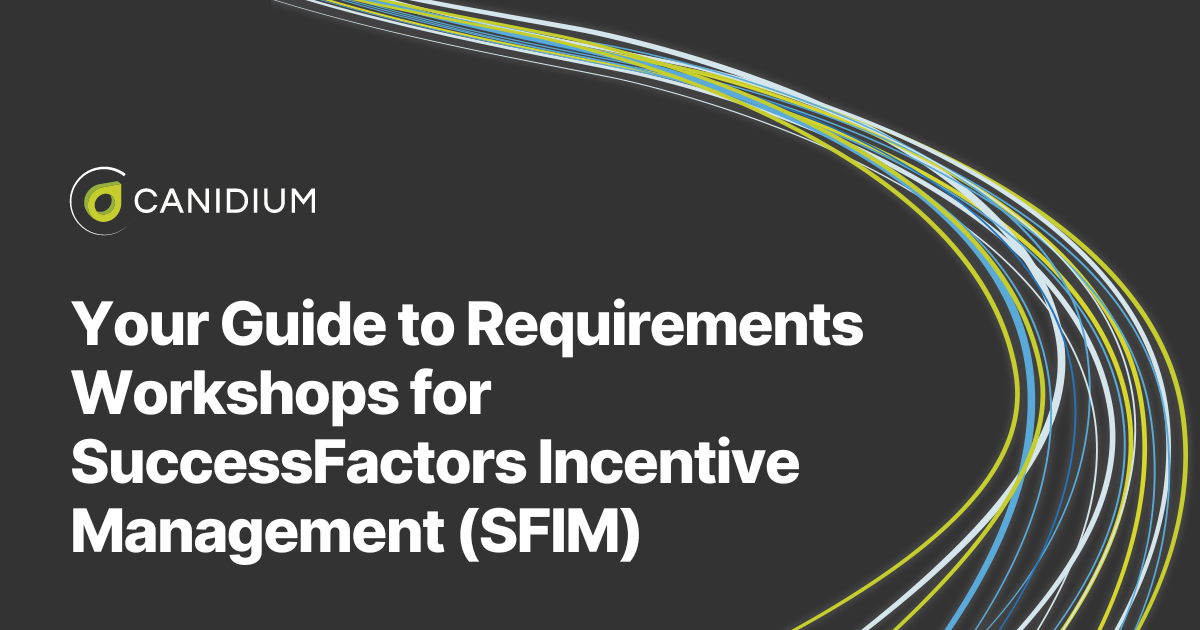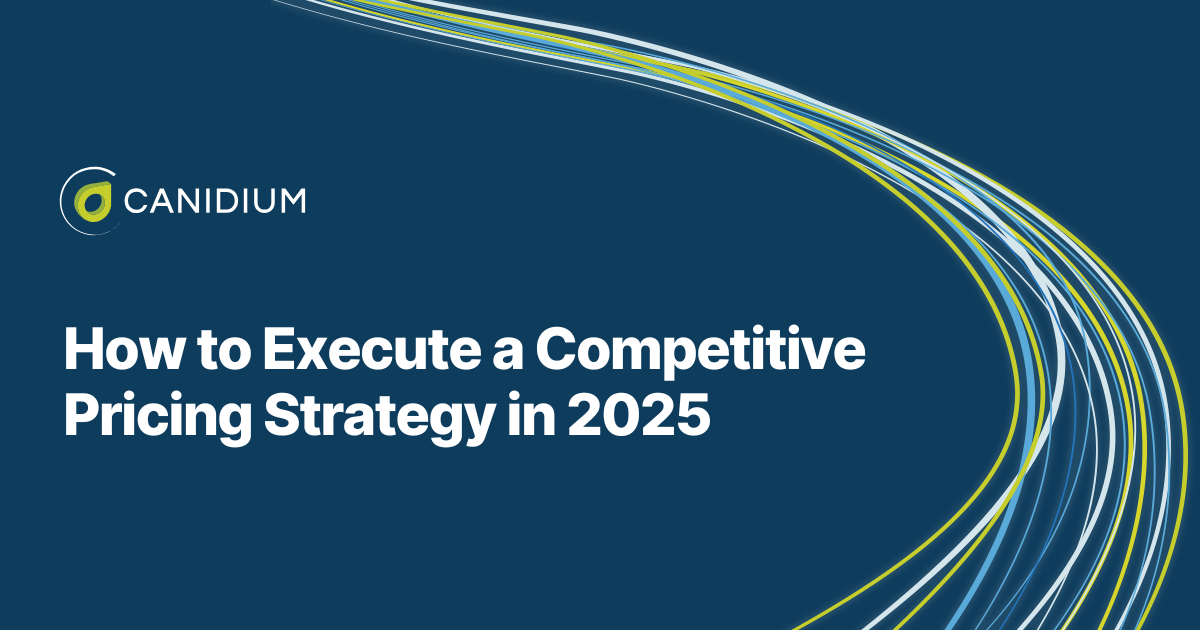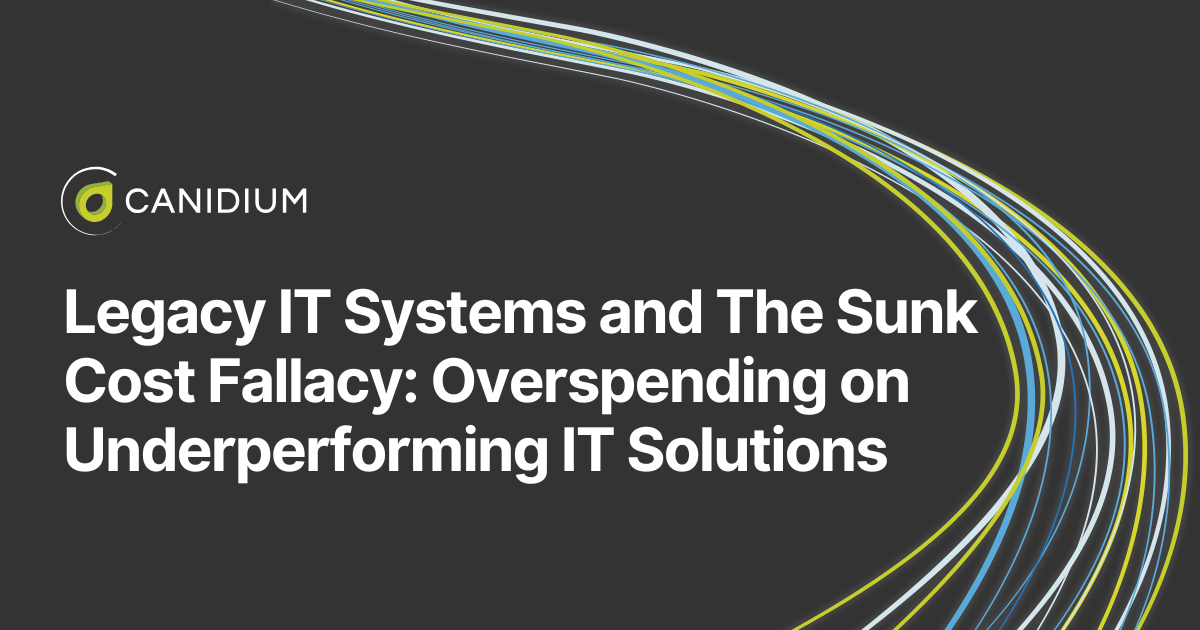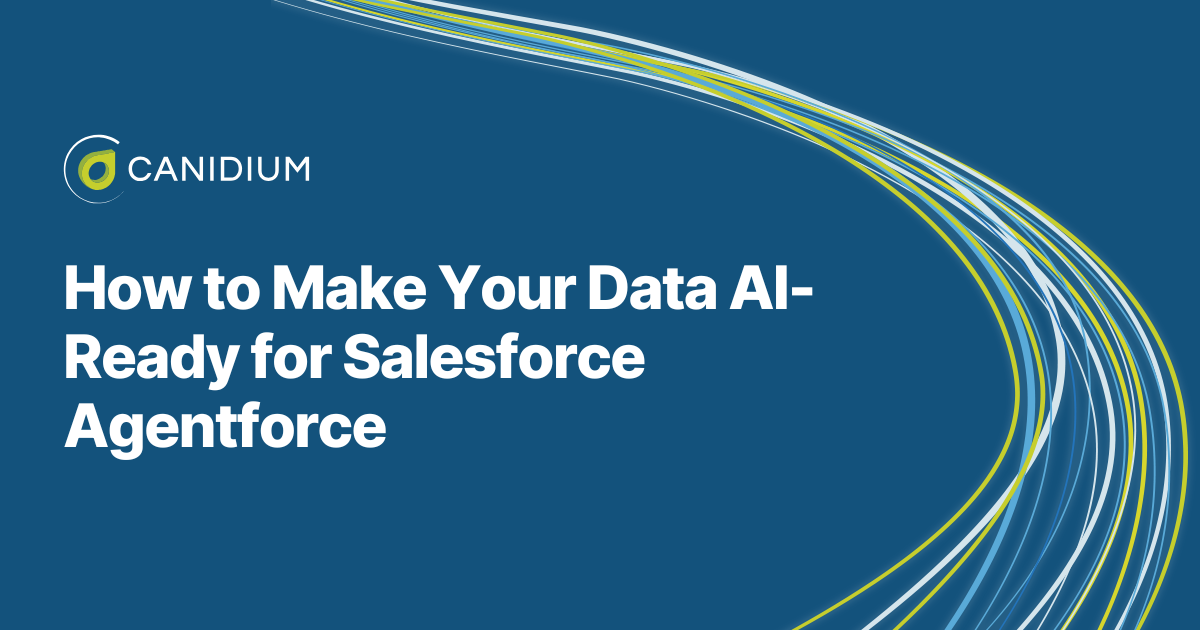Your implementation partner will design and configure your new solution to your specifications. However, to do this, you must first successfully communicate your needs, existing system design, and upcoming goals to them.
Your requirements workshop is a foundational component of your overall implementation process. The success of this process depends on your participation. Yet, it can be challenging to gather all the necessary people, information, and resources your partner needs during your requirements workshop without a guide to follow.
At Canidium, our expert team leads clients through the workshop process, ensuring they have the information they need to communicate their goals and challenges successfully.
Based on this expertise, this guide prepares you for the implementation process by walking you through the following topics:
- What Is an SFIM Requirements Workshop?
- How to Prepare For Your Requirements Workshop Successfully
- SFIM Requirements Workshops: What to Expect
- Getting Started: Understanding the Requirements Workshop Process
What Is an SFIM Requirements Workshop?
The requirements workshop is a critical step of the overall implementation project. It occurs in the early stages of the process, as the workshop results establish the foundation on which your implementation partner will design, configure, and integrate your new software solution.
Depending on the logistics of your project, your requirements workshop may be completed on-site or virtually. Our SuccessFactors Incentive Management (SFIM) team at Canidium strives to conduct the seminar in person whenever possible. However, suppose it is not possible to coordinate an in-person workshop. In that case, virtual meetings can still facilitate a robust collaboration between your team and your implementation partner.
The workshop is a collaborative session between your internal team and software implementation partner. The workshop's objective is to establish and document your requirements for the implementation. Granular aspects of your commission's process will need to be communicated to your implementation partner, as well as detailed outlines of how your commission's data flows throughout your existing infrastructure. Your software implementation partner will then use this understanding of how your commission structure works and your goals for your new system to design and configure a bespoke new software setup.
A successful requirements workshop is vital to the overall functionality of your new software solution. This process is how your implementation partner gathers your organization's unique structural needs and goals. They need this information from you to configure your new solution to your exact specifications. The ultimate value of your solution, in part, depends on you communicating your requirements successfully during this workshop.
Furnishing all the required documentation and successfully detailing your configuration needs is vital. However, it is hard to know where to start if you have never gone through this process.
To navigate your requirements workshop for an SFIM implementation, you must prepare for the process.
How to Prepare For Your Requirements Workshop Successfully
Embarking on a requirements workshop is a critical step in any implementation project. It sets the stage for understanding your business's unique needs and challenges, ensuring that the final solution aligns perfectly with your goals. However, conducting a successful workshop requires more than just gathering stakeholders in a room; it demands flexibility, patience, and a collaborative mindset.
It's essential to be adaptable in these sessions. Conversations may need to pivot based on the complexities that arise. What you anticipate taking an hour might extend to four as new details emerge, requiring thorough exploration and understanding. This fluid approach allows for a comprehensive and accurate capture of requirements, even if it means deviating from the initial agenda.
The goal is to work as a cohesive team, with every participant contributing their expertise and insights. This collaborative effort enhances the quality of the information gathered. It fosters a sense of shared ownership and commitment to the project's success. However, a flexible mindset is not enough on its own. You must prepare for the workshop beforehand to avoid the most common implementation pain points.
To make sure you are ready to fully participate in your requirements workshop, here are the five steps you should take:
.png?width=1920&height=1080&name=How%20to%20Prepare%20For%20Your%20Requirements%20Workshop%20(3).png)
1. Build Your Internal Requirements Workshop Team
To ensure a successful requirements workshop, it is crucial to assemble a robust internal implementation team comprising key subject matter experts (SMEs). These individuals provide the necessary insights and answers to define and document requirements accurately.
Start by including members of your sales operations team and accounting department. They play a critical role in understanding and conveying the sales processes, data sources, and overall sales strategy. The compensation team, often linked to finance or accounting, is equally important. They are essential for detailing compensation plans, calculation methods, and financial reporting needs. Their expertise ensures that the system accurately reflects your compensation structure and complies with financial regulations.
Additionally, consider involving salespeople themselves. They offer a firsthand perspective on commission structures. They can provide valuable feedback on the practical aspects of the compensation plans. Their input helps tailor the system to better meet the needs of those who use it daily.
Your IT experts will provide vital input on your existing system infrastructure, making them critical internal team members. You should also include executive leadership to ensure that the new system's requirements align with more significant organizational goals. At the same time, you may also want to include HR to help develop a training program for the new solution.
By bringing together these diverse experts, you comprehensively understand your company's needs and create a collaborative environment for developing a robust and effective solution. This multidisciplinary approach enhances the accuracy of the requirements gathered and fosters a sense of ownership and alignment across different departments, leading to a more successful implementation.
2. Collect and Distribute Documentation
Gathering and distributing relevant documentation is crucial in preparing for a requirements workshop on implementing commission systems. This step ensures that your internal team and the implementation partner are well-prepared to engage in detailed discussions and make informed decisions.
Key Documentation To Collect
- Existing Process Maps: These maps should outline your current commission calculation processes. They visually represent workflows, data flows, and decision points.
Contributor: Sales Operations Team, Compensation Team.
- Compensation Plan Documents: Furnish detailed descriptions of current compensation plans, including how commissions are calculated, performance metrics, and tiers or bonuses.
Contributors: Compensation Team, Finance/Accounting Department.
- Sample Data: Provide representative data sets that reflect typical transaction volumes, types of sales data, and any anomalies that may occur. This data helps the implementation partner understand the data landscape and design the system to handle real-world scenarios.
Contributors: IT Team, Sales Operations Team.
- Reporting Requirements: Include existing reports, desired reports, and any reporting templates used. Specify what data needs to be included, the format, and the reporting frequency.
Contributors: Compensation Team, Sales Operations Team, Finance/Accounting Department.
- Technical Documentation: Provide details of your existing IT infrastructure, data sources, and any integrations with other systems. Include information about databases, data warehouses, and any middleware.
Contributors: IT Team.
- Business Calendars: Calendars outlining critical dates and periods for commission calculations, such as monthly, quarterly, and annual processing schedules.
Contributors: Compensation Team, Finance/Accounting Department.
The implementation partner will analyze your documentation to understand current processes, data structures, and reporting needs, identifying gaps and areas for improvement. They will prepare specific questions and discussion points for the workshop, ensuring efficient time use. After reviewing the sample data, they validated its quality and structure to effectively design and test the new commission system. Based on this analysis, the partner will propose customized solutions, best practices, and optimizations tailored to enhance your commission processes.
3. Brainstorm With Your Team
Before the workshop, you may want to hold several brainstorming sessions with your team to identify potential challenges and areas for improvement in your commission processes.
. Here are a few best practices that to help you make the most of these meetings:
- Gather a diverse group, including sales operations, the compensation team, IT, finance, and sales representatives.
- Start by discussing pain points such as delays in commission calculations due to manual errors or difficulties reconciling payouts with financial records.
- Encourage team members to suggest desired features, like real-time commission tracking dashboards for sales reps or seamless integration with CRM and ERP systems for IT.
- Explore potential improvements, such as automating data uploads to reduce errors and save time.
Use these discussions to uncover hidden requirements, like the need for complex commission rules to handle various sales scenarios or scalable solutions to accommodate business growth. For example, the compensation team might highlight the need for detailed audit trails to streamline reconciliation and compliance. At the same time, sales operations might emphasize specific commission structures for different product lines. This proactive approach ensures a comprehensive understanding of your needs. It prepares your team to engage more effectively during the workshop, leading to a tailored commission incentive solution that aligns with your business goals.
4. Define Solution Priorities and Goals
To successfully implement a commission incentive solution, working with your internal team to identify and prioritize the key features and functionalities you need from the new system is crucial. Start by gathering input from various stakeholders, including sales operations, the compensation team, IT, finance, and sales representatives. These insights will help you compile a comprehensive list of requirements, from the ability to handle complex commission structures to seamless integration with existing data sources.
Understanding these priorities will guide the discussions during the workshop and help the implementation team focus on what matters most to your business. For example, suppose real-time reporting and analytics are critical to your operations. In that case, your team should highlight this need early in the discussions. Real-time reporting might include features like up-to-date dashboards showing sales performance, commission earnings, and KPIs. Ensuring this capability is a priority can lead to more informed decision-making and immediate visibility into sales activities.
Similarly, if automating data uploads and reducing manual intervention are top priorities, ensure these are emphasized to streamline processes and improve accuracy. For instance, if your system requires manual data entry for sales transactions, leading to delays and potential errors, prioritizing automation will help achieve a more efficient and reliable process. An automated data upload feature might involve integrating the commission system with your CRM and ERP systems to ensure seamless data flow and minimize the risk of discrepancies.
By clearly defining and prioritizing your requirements, you ensure that the most critical benefits of the commission incentive solution are addressed first. This strategic alignment helps avoid scope creep and keeps the project focused on delivering value. Additionally, having well-defined priorities enables the implementation partner to tailor their approach and solutions to meet your business needs.
SFIM Requirements Workshops: What to Expect
This process aims to help your implementation partner gather requirements, ensure a clear understanding of the project's scope, and bring the right people into the workshop. To collect in-depth requirements effectively, the workshops are typically categorized and structured around key pillars, which include data, reporting needs, and advanced workflows.
During the workshop, the implementation partner will explore these areas thoroughly to document all necessary aspects of the SFIM implementation. This approach streamlines the workshop process and sets a solid foundation for a successful implementation, aligning the new system with your business needs and goals. By focusing on these critical areas, the partner ensures that the system will be configured accurately and integrate seamlessly with your existing processes, ultimately enhancing operational efficiency and effectiveness.
Here's a breakdown of the different workshop types you may need to go through to complete your SFIM requirements process:
Map Out Commissions Data
Mapping out inbound data ensures that all necessary information for commission calculations and reporting is accurately identified and integrated. For example, knowing that your CRM system, like Salesforce, provides critical sales data helps in setting up automated data uploads, reducing manual errors, and ensuring timely updates.
At the same time, understanding outbound data needs, such as the specific details required in payroll files and the systems these files interact with, is essential. This knowledge ensures that commission payouts are accurate and timely and that data flows seamlessly to other payroll or financial software systems, avoiding discrepancies or delays.
By creating detailed financial statements and drill-down reports, the implementation partner helps ensure that sales representatives understand their earnings and can easily verify the transactions contributing to their commissions.
Based on these critical functions, your SFIM implementation team will conduct a requirement workshop on data. Typically, this workshop starts by examining all inbound data essential for commission calculations and reporting. This process includes identifying data sources such as CRM systems and sales logs, determining data ownership, establishing data loading frequencies, estimating expected data volumes, and discussing automation needs. For example, this is where you will explore ideas like integrating Salesforce data and automating its upload to streamline processes and reduce errors.
Next, your implementation partner will delve into outbound data needs by specifying the exact information required in payroll files and identifying downstream systems, such as payroll or financial software, to ensure seamless data transfer. Comprehensive reporting requirements will also be a focal point. Through a collaborative effort, you will create detailed financial statements for payees, drill-down reports for transparency, and develop operational reports to analyze compensation plan effectiveness and KPIs such as sales volume and revenue.
Reviewing and cleaning your data sources before implementation is crucial to ensure your reporting is as accurate and insightful as possible.
Design Your Comp Plan
The compensation plan design workshop is critical to the SFIM implementation process. This separate and focused session is dedicated solely to understanding and documenting the intricate details of your compensation plans. During this workshop, your implementation partner will thoroughly review your plan documents to identify how salespeople are paid and how their commissions are calculated. Given the complexity and importance of these plans, this aspect of the workshop can be quite time-consuming, often requiring several days to complete.
The session involves meticulously examining the various elements of the compensation structure, such as commission rates, performance metrics, tiered incentives, and any special bonuses. Each component is analyzed to ensure it aligns with your business goals and accurately reflects the desired outcomes for your sales team. The workshop also allows you to address any specific challenges or unique requirements your organization might have, ensuring that the final SFIM setup is tailored to your needs.
The implementation partner will meticulously document your typical compensation cycle during the requirements workshop. This includes identifying when data is received, how often initial calculations are run, and the process for fine-tuning these calculations as new data becomes available. For instance, if your company operates on a monthly cycle with weekly data updates, it is vital to capture this detail to ensure the SFIM system can handle continuous data integration and incremental calculations.
This documentation process will also consider cycle variations, such as bi-weekly or quarterly calculations. By thoroughly understanding and documenting these cycles, the implementation partner can configure the SFIM system to automate and optimize your specific processes, ensuring that it effectively supports your operational needs. This level of detail helps create a system that performs accurate and timely calculations and adapts to the dynamic nature of data flows within your business, leading to enhanced efficiency and reduced manual intervention.
By dedicating ample time to this detailed review, the implementation partner ensures that all aspects of the compensation plan are accurately captured and effectively implemented. This thorough approach helps create a robust, transparent incentive system that motivates your sales team and drives overall business performance.
Establish Advanced Workflow Needs
In specific scenarios, your SFIM implementation may require advanced workflows to manage the processing and review of data or information. These situations arise when data must be passed between individuals or departments for review and modification before final approval. The advanced workflow tool built into SFIM is designed to facilitate this complex data management, ensuring that information moves seamlessly through various stages until it reaches the desired form.
During the requirements workshop, the implementation partner will focus on identifying these advanced workflow needs. They will gather detailed requirements to understand precisely how data flows within your organization and what processes are involved in transforming this data. For example, sales data might need to be reviewed by sales managers, then adjusted by the finance team, and finally approved by the compensation team before being used for commission calculations.
The workshop will explore configuring these workflows within SFIM, ensuring that each stage is clearly defined and that the system supports the necessary reviews and modifications. This process might involve setting up automated notifications for task completions, creating checkpoints for data validation, and ensuring that the right individuals are notified at each stage.
Getting Started: Understanding the Requirements Workshop Process
A successful SFIM requirements workshop is a cornerstone of the overall implementation project. It lays the groundwork for designing, configuring, and integrating your new software solution by thoroughly understanding your business needs and processes. This workshop, conducted on-site or virtually, ensures that your internal team and the implementation partner can collaborate effectively, capturing all necessary details to tailor the system precisely to your requirements.
During the workshop, you will delve into critical areas such as mapping out inbound and outbound data, defining comprehensive reporting needs, designing compensation plans, and establishing advanced workflow processes. Each session aims to document every aspect of your commission structure and business processes meticulously, ensuring that the final SFIM setup aligns perfectly with your operational goals.
Preparing for this workshop involves assembling a robust internal team of subject matter experts, collecting and distributing relevant documentation, and conducting internal brainstorming sessions to identify potential challenges and prioritize solution requirements.
This detailed preparation enhances the workshop's efficiency. It ensures that all critical aspects of your business are addressed, leading to a more effective and efficient commission management system.
Ultimately, the success of your SFIM implementation hinges on the thoroughness of the requirements workshop. By fully engaging in this process and communicating your needs clearly, you enable the implementation partner to configure a solution that drives operational efficiency, accuracy, and overall business performance.
Now that you know how to prepare for your requirements workshop, your next step is to learn how to facilitate comprehensive user adoption after your solution goes live. Learn how to solve the software adoption issue here.








